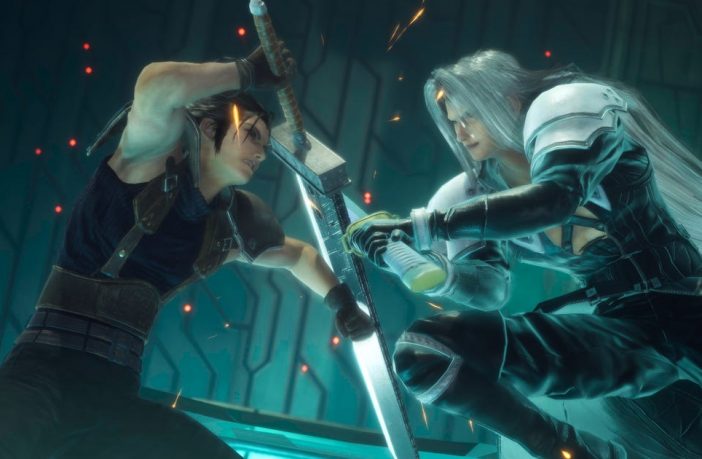
Final Fantasy 7 fans braced themselves for a good meal in the mid-2000s, as developer Square Enix released a slew of spinoffs expanding the universe of the legendary 1997 PlayStation RPG. Sadly, most of the new stories – like the shooter PS2 Dirge of Cerberus and the CGI movie Advent Children – turned into fast food alongside the delicious and nutritious meal that was Final Fantasy 7.
The only exception was 2007’s excellent action-RPG crisis core. This prequel put you in the role of Zack Fair, a character with a small but pivotal role in Final Fantasy 7’s main story, and explored his career as a member of the megacorporation paramilitary group Shinra’s Soldier.
It offered around 25 hours of main story gameplay, a solid portion of side missions, and an unavoidable emotional punch of an ending that seared into fans’ brains.
The problem: It was only on PlayStation Portable (the PSP) and sat abandoned on Sony’s now obsolete handheld for over 15 years. However, after 2020 Final Fantasy 7 Remake and its downloadable content hinted that Zack would play a bigger role in the upcoming RenaissanceSquare Enix is finally letting a new generation of gamers dive into Crisis Core.
Crisis Core: Final Fantasy 7 Reunion will be released on PS4, PS5, Xbox One, Xbox Series X | S, Nintendo Switch and PC on December 13. I played some of the game on PS5 over the weekend and found this remastered classic to be a nostalgic joy.
I initially thought it was just the PSP game with a few modern flourishes – 3D character models, enhanced environments, and the ability to finally play it on a massive TV screen (or mirror the handheld original on switch). Some of the pre-rendered cutscenes aren’t as well remastered, with graphical artifacts sometimes spoiling the picture.

The iconic Ifrit summon is the first of many you will encounter.
Square-Enix
As I played, it became increasingly clear that Square Enix had also made more subtle changes; the developers brought the combat closer to the beautiful flow of the remake. Chaining together physical and magical attacks and summoning divine beings that perform super attacks feels natural and fluid – partly because all controllers in modern systems have more buttons to use than the PSP – making for a much more enjoyable experience than it was in 2007.
You also have a new way to interrupt the biggest attacks of your most powerful enemies, dealing as much damage as possible when they recharge. It might not seem like a major addition, but it does add a layer of strategy to boss encounters that you might have played defensively.
The slot-like Digital Mind Wave system that periodically gives you bonuses or summons an ally in battle remains impenetrable as ever – it also determines when Zack and his abilities level up. Rest assured it’s not random, so it looks like you just can’t see how many experience points you have. His connection to Zack’s emotional effect was also used to great narrative effect at a few key points.


Admittedly, Sephiroth becomes less chill past a certain point.
Square-Enix
All cutscenes are now fully voiced – chunks of the original were just text – with the remake’s excellent cast in their roles. Including Tyler Hoechlin from Superman and Lois as future villain Sephiroth, who is a rather cold (if somewhat aloof) dude for much of this game.
However, for better or worse, Crisis Core Reunion is basically the same game we got back in 2007. It’s still broken up into easily digestible story chapters where Zack goes on missions for Shinra, unlocking missions from small size along the way – it can’t quite shake its roots as a portable game designed for quick sessions.
It feels a bit stop-start in the first few hours, especially as you’re introduced to the game’s various systems, but you’ll soon get into the groove.


The DMW at the top left of the screen will be your constant companion in battle.
Square-Enix
The gameplay loop of doing a chapter, then going through a bunch of unlocked missions and talking to the various hub characters around Shinra HQ is satisfying – similar to Mass Effectanother classic RPG from 2007. It’s basically just a few rooms and streets, greatly enhanced by the game’s beautiful art direction (without the slow loading times of the PSP version).
Zack is also an ultra-charismatic protagonist, and his enthusiasm is a breath of fresh air from Final Fantasy 7’s cloud of bad temper. Fans familiar with the relationship between these two will find it particularly rewarding to know about Zack.


Seeing a pre-Final Fantasty 7 Cloud is one of the great pleasures of Crisis Core.
Square-Enix
The other characters are a mixed bag – Zack’s Soldier mentor Angeal is so stiff I’m drifting pretty much every time he’s on screen, and the main Genesis villain is a dorky Sephiroth wannabe. The voice actors do their best, but the writing around these two just isn’t compelling. However, Cloud and Aerith catch up when they enter the story.
And seeing the early adventures of these gaming icons, and how Zack helped shape them, is the best reason to play Crisis Core Reunion. It’s still a 2007 PSP game at heart (as evidenced by the gorgeous flip phones of the mid-2000s), but Square Enix’s ambition has made it one of the best games on that system. I’m so glad he’s not stuck there anymore. This is a game that all Final Fantasy 7 fans should play before Rebirth arrives late next year.
Tech




